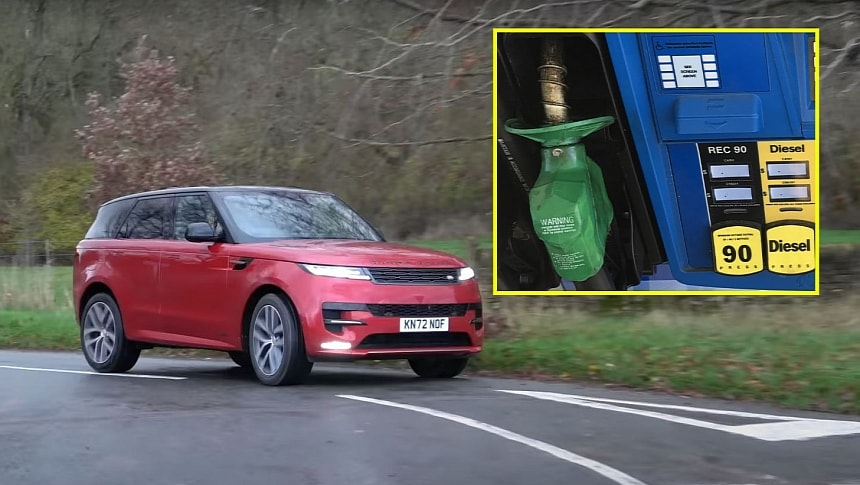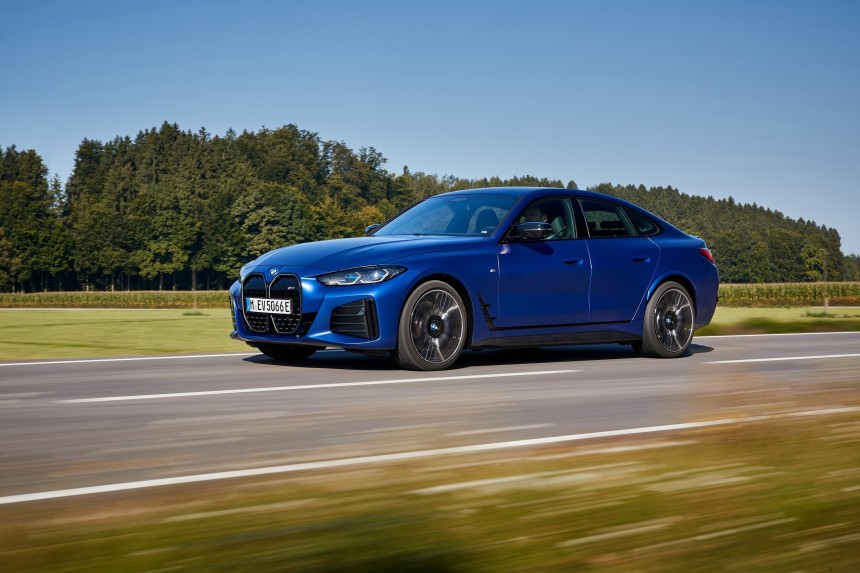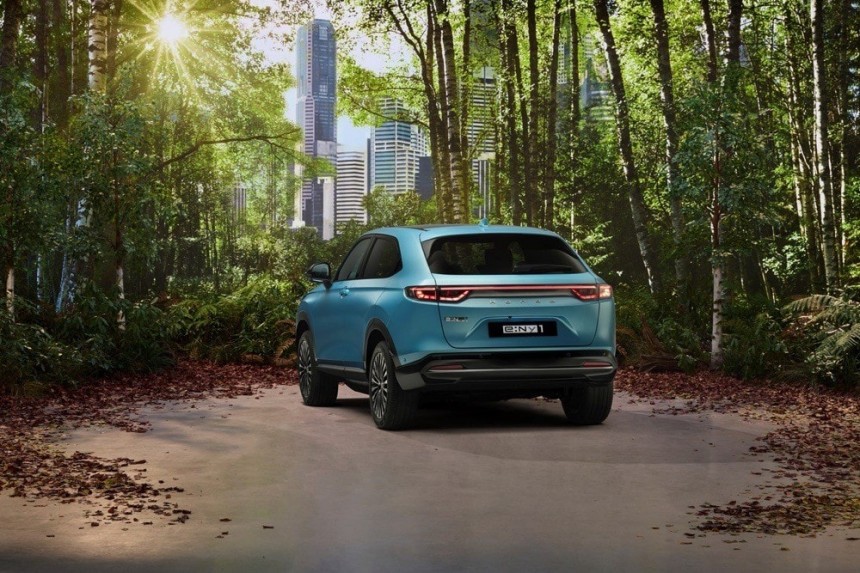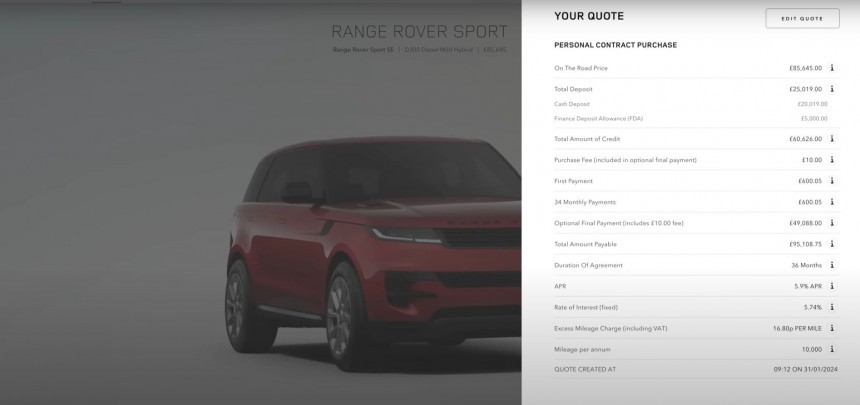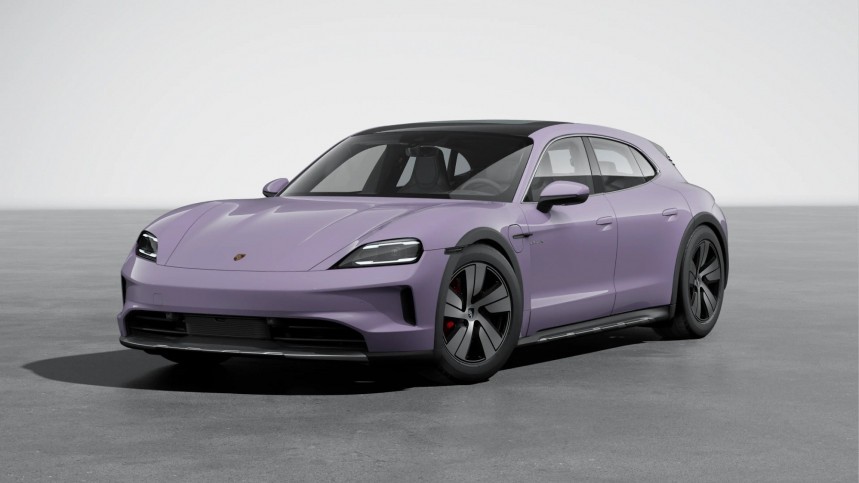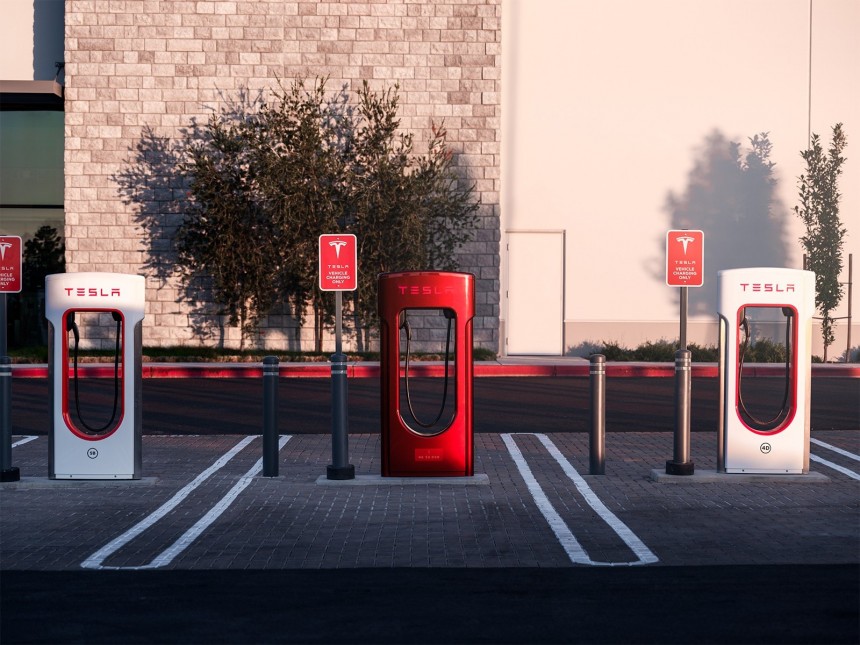Last year's best-selling car worldwide was an all-electric vehicle – the Tesla Model Y. It has never been clearer that the popularity of EVs is on the rise in the northern hemisphere and Australia. Even people living deep in rural areas have started considering them. So, how could a renowned auto journalist who owned a plug-in hybrid SUV and a battery-electric CUV give up on fully embracing zero-emission transportation? Here's what you need to know.
First things first, who is this guy? Harry Metcalfe founded Britain's Evo auto magazine, which is still up and running as I'm writing these words. He's also a successful farmer, like his friend Jeremy Clarkson. Metcalfe has also been close with another ex-Top Gear co-host, Richard Hammond, with whom he shared a special connection thanks to a Ferrari 550 Maranello.
Besides being a very good businessman, journalist, and farmer, Metcalfe is also a true gearhead. He has a barn full of classic and modern cars that would make anyone jealous. But like any true car lover, he stores most of his collection and has other rides serving as family haulers or commuting appliances. He had a Jaguar i-PACE and a BMW X5 xDrive45e in the past four years. The former was an EV, while the latter was a plug-in hybrid (PHEV).
Secondly, seeing someone with so much experience return to a diesel-powered car raises some eyebrows, even though that vehicle is a well-equipped Land Rover Range Rover Sport. The global trend points to EVs like the Tesla Model 3 or the BMW i4 M50 as ideal buys. They are becoming increasingly popular.
Also, let's not forget that the whole idea behind ditching the internal combustion engine was initially based on fighting climate change worldwide. Then, it also became about reducing the reliance on foreign oil and making cities a bit quieter. Lately, it has also turned into a discussion about how the cabin is more silent and how you, as an owner, could pay less for personal mobility.
Finding reasonable insurance might be tricky, though. Providers figured out that EVs are expensive to fix, and they're not making the lives of those who switch from traditional cars any easier.
Thirdly, most EV owners say they would never go back to an internal combustion engine-powered vehicle. Little to no maintenance, one-pedal driving, the latest car tech, instant torque, a lower center of gravity, no shaking when starting, avoiding gas stations, and a simpler climate control system that makes preconditioning a breeze are the most common perks EV buyers mention when talking about their "greener" rides.
But should you listen to what they have to say? Well, the short answer is "yes." Gathering car information from owners who have pulled the trigger before you is always a good idea.
However, checking out what others may have to add is smart. Take Metcalfe as an example. He tests and owns a lot of vehicles. He has experience as a journalist and as a businessman.
Of course, that doesn't mean he can't be biased. But the man is a good source of information in a world where talking about cars somehow turned into a TV show that's only meant to grab your attention and leave you with nothing of substance.
He looked at available lease deals for a two-row SUV he liked. The Range Rover Sport P460e would have led to a monthly payment of £1,026 ($1,296). The diesel-powered Sport D300 with a mild hybrid setup translated into a monthly payment of £600 ($758). That's almost half.
Even so, it still didn't look like the right car for a man with a farm, a large garage, and a warehouse. He could have always charged at home and avoided the trouble of looking at the fuel price. However, a Land Rover customer doesn't necessarily care about which is cheaper to run. If people actually put more emphasis on reliability and running costs, we would all be driving Toyotas or, as Consumer Reports recently revealed, BMWs.
Metcalfe states that the diesel powertrain suits this type of SUV, even though he drove a BMW X5 xDrive45e before leasing this Range Rover Sport. He even contemplated upgrading to the current-gen X5 PHEV or the Land Rover Range Rover P510e but gave up because the high power output would have translated into a high insurance cost. The Bimmer also looked like it was trying too much design-wise.
The man continues and says that some automakers might have rushed to drop the development of the internal combustion engine in light of new emission standards. Audi, for example, promised to become an EV maker by 2026. Coincidentally, that's also when it'll join Formula 1. Metcalfe argues that customers might have silently disagreed with such strategies, and that's now revealed by depreciation and consumer preferences.
Look at the refreshed Model 3. It's the same vehicle with modest improvements, yet people are more than happy to get one.
Fifthly, Metcalfe also points out rather eloquently that EVs are heavier and more powerful than their conventional counterparts. I've previously said nobody needs 1,000-hp cars to commute or take family skiing. It's too much, no matter how you look at it. That negatively impacts wear and tear and forces insurers to take a different stance. Moreover, dealers are also not very fond of EVs. They want to sell new ones, not the units that might bleed money by just sitting around.
Remember when we told you about the BMW iX, the Audi e-tron GT, and the pre-facelift Porsche Taycan tanking in value and becoming sweet, sweet deals? Well, that might extend to other makes and models quickly.
People simply don't trust the reliability of the high-power charging network or the dependability of these "new-age" cars that might become a headache when something goes wrong, and they don't seem ready to put up with all the developments in the sector.
Take the new Taycan as an example. It charges faster, goes farther, has better tech, and develops more power. The pre-facelift generation is ready to go into a free fall. Why would anyone consider a pricey EV if they know that it will devalue considerably as soon as the successor is out and about? Leasing with no money down is a no-brainer, but that's impossible with such posh rides.
Tesla, the leader in this segment, has experimented with all sorts of battery chemistries. Depending on the trim, the same vehicle may come from the factory with different energy storage units. Would a Ford F-150 owner or a Dodge Charger buyer be willing to learn about what those changes entail?
Would they add a Level 2 charger to their home, install multiple apps on their phone, and learn about the preconditioning and correct storage conditions when the time comes to buy a new, zero-emission car? Would they accept that degradation and, consequently, increased range loss over time is an expected phenomenon? Would they be ok with losing 30-40% of the range during winter? Would they put up with adapters and long charging times? Chances are they will need something better than the EV tax credit to make the switch.
But besides all that, fast charging is expensive. EV owners who don't have an outlet to plug into at home or live in crowded urban areas with limited parking and no street charging have to rely on Superchargers or Electrify America dispensers. Those electrons may be delivered faster, but they are costly.
But does all this mean you should avoid buying an all-electric vehicle? Well… No. Not at all! There are many disadvantages to EV ownership, but there are upsides, too.
The Hyundai Kona Electric, the VW ID.4, the Fisker Ocean, the Ioniq 5/Kia EV6, and even the MINI Cooper SE are great options. However, none are as good as the new Tesla Model 3. Even though the world's most valuable automaker isn't known for speedy parts delivery and repair, it has gotten right what matters most: efficiency, charging, and onboard tech. Anyone could get inside a Tesla, and, in a matter of hours, they would be familiar with how it operates. It's enough to use the built-in trip planner, and they'll always know when it's time to plug in without thinking about adapters, preconditioning, finding a charger, or worrying about wasting time.
In conclusion, automakers and regulators still have a lot of work ahead of them to maximize road transport CO2 reduction. Meanwhile, people who were interested in EVs but didn't want to spend a lot on a brand-new one can now take advantage of the heavy discounts available on the secondary market. But the bottom line is that EVs aren't yet superior to gas- or diesel-powered cars for the average customer.
Besides being a very good businessman, journalist, and farmer, Metcalfe is also a true gearhead. He has a barn full of classic and modern cars that would make anyone jealous. But like any true car lover, he stores most of his collection and has other rides serving as family haulers or commuting appliances. He had a Jaguar i-PACE and a BMW X5 xDrive45e in the past four years. The former was an EV, while the latter was a plug-in hybrid (PHEV).
Secondly, seeing someone with so much experience return to a diesel-powered car raises some eyebrows, even though that vehicle is a well-equipped Land Rover Range Rover Sport. The global trend points to EVs like the Tesla Model 3 or the BMW i4 M50 as ideal buys. They are becoming increasingly popular.
Also, let's not forget that the whole idea behind ditching the internal combustion engine was initially based on fighting climate change worldwide. Then, it also became about reducing the reliance on foreign oil and making cities a bit quieter. Lately, it has also turned into a discussion about how the cabin is more silent and how you, as an owner, could pay less for personal mobility.
A narrative change
Most recently, owning an EV has become a thing of personal taste. Most automakers have improved their offerings. That makes switching to "zero-emission" driving a lot easier. Buying a Chevy Bolt or a Hyundai Kona Electric seems like a great idea if you have an outlet at home or access to a Level 2 charger at work. After all, commuting appliances don't have to be Tesla Model X Plaids, Lucid Air Grand Tourings, or Porsche Taycan Turbo Cross Turismos.Finding reasonable insurance might be tricky, though. Providers figured out that EVs are expensive to fix, and they're not making the lives of those who switch from traditional cars any easier.
Thirdly, most EV owners say they would never go back to an internal combustion engine-powered vehicle. Little to no maintenance, one-pedal driving, the latest car tech, instant torque, a lower center of gravity, no shaking when starting, avoiding gas stations, and a simpler climate control system that makes preconditioning a breeze are the most common perks EV buyers mention when talking about their "greener" rides.
But should you listen to what they have to say? Well, the short answer is "yes." Gathering car information from owners who have pulled the trigger before you is always a good idea.
However, checking out what others may have to add is smart. Take Metcalfe as an example. He tests and owns a lot of vehicles. He has experience as a journalist and as a businessman.
Of course, that doesn't mean he can't be biased. But the man is a good source of information in a world where talking about cars somehow turned into a TV show that's only meant to grab your attention and leave you with nothing of substance.
Keeping it simple
Fourthly, Metcalfe argues that switching to a diesel-powered car was very simple – it was about money. Had prices not been an issue since the invention of the motor vehicle, all of us would have been driving Rolls-Royces, Porsches, BMW Ms, Mercedes-Maybachs, and so on. It's understandable why even a well-off gearhead chose to remain levelheaded regarding finances.He looked at available lease deals for a two-row SUV he liked. The Range Rover Sport P460e would have led to a monthly payment of £1,026 ($1,296). The diesel-powered Sport D300 with a mild hybrid setup translated into a monthly payment of £600 ($758). That's almost half.
Even so, it still didn't look like the right car for a man with a farm, a large garage, and a warehouse. He could have always charged at home and avoided the trouble of looking at the fuel price. However, a Land Rover customer doesn't necessarily care about which is cheaper to run. If people actually put more emphasis on reliability and running costs, we would all be driving Toyotas or, as Consumer Reports recently revealed, BMWs.
Metcalfe states that the diesel powertrain suits this type of SUV, even though he drove a BMW X5 xDrive45e before leasing this Range Rover Sport. He even contemplated upgrading to the current-gen X5 PHEV or the Land Rover Range Rover P510e but gave up because the high power output would have translated into a high insurance cost. The Bimmer also looked like it was trying too much design-wise.
The man continues and says that some automakers might have rushed to drop the development of the internal combustion engine in light of new emission standards. Audi, for example, promised to become an EV maker by 2026. Coincidentally, that's also when it'll join Formula 1. Metcalfe argues that customers might have silently disagreed with such strategies, and that's now revealed by depreciation and consumer preferences.
The bigger picture
People are buying plug-in hybrids in droves, even though the all-electric Model Y was last year's best-selling vehicle worldwide. But what Tesla figured out early, and others didn't, is efficiency, fast charging, and tech. VW, one of the world's most important automakers, is still struggling with infotainment software and cabin design. Tesla slapped an iPad in the middle of the dashboard and kept updating the system. That was enough to make almost every buyer happy with a minimalistic approach.Look at the refreshed Model 3. It's the same vehicle with modest improvements, yet people are more than happy to get one.
Fifthly, Metcalfe also points out rather eloquently that EVs are heavier and more powerful than their conventional counterparts. I've previously said nobody needs 1,000-hp cars to commute or take family skiing. It's too much, no matter how you look at it. That negatively impacts wear and tear and forces insurers to take a different stance. Moreover, dealers are also not very fond of EVs. They want to sell new ones, not the units that might bleed money by just sitting around.
Remember when we told you about the BMW iX, the Audi e-tron GT, and the pre-facelift Porsche Taycan tanking in value and becoming sweet, sweet deals? Well, that might extend to other makes and models quickly.
Take the new Taycan as an example. It charges faster, goes farther, has better tech, and develops more power. The pre-facelift generation is ready to go into a free fall. Why would anyone consider a pricey EV if they know that it will devalue considerably as soon as the successor is out and about? Leasing with no money down is a no-brainer, but that's impossible with such posh rides.
Tesla, the leader in this segment, has experimented with all sorts of battery chemistries. Depending on the trim, the same vehicle may come from the factory with different energy storage units. Would a Ford F-150 owner or a Dodge Charger buyer be willing to learn about what those changes entail?
Would they add a Level 2 charger to their home, install multiple apps on their phone, and learn about the preconditioning and correct storage conditions when the time comes to buy a new, zero-emission car? Would they accept that degradation and, consequently, increased range loss over time is an expected phenomenon? Would they be ok with losing 30-40% of the range during winter? Would they put up with adapters and long charging times? Chances are they will need something better than the EV tax credit to make the switch.
But besides all that, fast charging is expensive. EV owners who don't have an outlet to plug into at home or live in crowded urban areas with limited parking and no street charging have to rely on Superchargers or Electrify America dispensers. Those electrons may be delivered faster, but they are costly.
It's not a one-way road
Metcalfe reminds us of all these aspects in the video below. He also argues that the UK and the European Union need to focus more on regulating efficiency and not just emissions. That's a great idea, but not if you plan on killing the internal combustion engine before the EV becomes a reliable replacement. Artificially accelerating the elimination of the ol' and trusty fossil fuel-powered car won't do much for the environment.But does all this mean you should avoid buying an all-electric vehicle? Well… No. Not at all! There are many disadvantages to EV ownership, but there are upsides, too.
The Hyundai Kona Electric, the VW ID.4, the Fisker Ocean, the Ioniq 5/Kia EV6, and even the MINI Cooper SE are great options. However, none are as good as the new Tesla Model 3. Even though the world's most valuable automaker isn't known for speedy parts delivery and repair, it has gotten right what matters most: efficiency, charging, and onboard tech. Anyone could get inside a Tesla, and, in a matter of hours, they would be familiar with how it operates. It's enough to use the built-in trip planner, and they'll always know when it's time to plug in without thinking about adapters, preconditioning, finding a charger, or worrying about wasting time.
In conclusion, automakers and regulators still have a lot of work ahead of them to maximize road transport CO2 reduction. Meanwhile, people who were interested in EVs but didn't want to spend a lot on a brand-new one can now take advantage of the heavy discounts available on the secondary market. But the bottom line is that EVs aren't yet superior to gas- or diesel-powered cars for the average customer.
